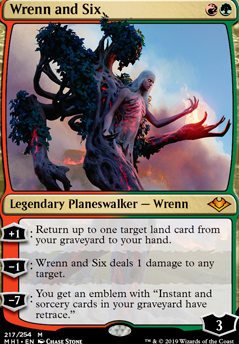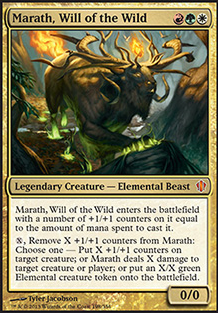Creature (27)
- 1x Admonition Angel
- 1x Ancient Greenwarden
- 1x Ashaya, Soul of the Wild
- 1x Avenger of Zendikar
- 1x Cavalier of Dawn
- 1x Cavalier of Flame
- 1x Dryad of the Ilysian Grove
- 1x Emeria Angel
- 1x Emeria Shepherd
- 1x Fertilid
- 1x Flamekin Harbinger
- 1x Knight of the Reliquary
- 1x Lotus Cobra
- 1x Mentor of the Meek
- 1x Mina and Denn, Wildborn
- 1x Moraug, Fury of Akoum
- 1x Nesting Dragon
- 1x Obsidian Fireheart
- 1x Omnath, Locus of Rage
- 1x Oracle of Mul Daya
- 1x Realm Razer
- 1x Scavenging Ooze
- 1x Shinewend
- 1x Solitude
- 1x Stingmoggie
- 1x Sylvan Safekeeper
- 1x Zirda, the Dawnwaker
Instant (6)
Land (37)
- 1x Arid Mesa
- 1x Blast Zone
- 1x Blighted Woodland
- 1x Bonders' Enclave
- 1x Canopy Vista
- 1x Cinder Glade
- 1x Crawling Barrens
- 1x Drownyard Temple
- 1x Fabled Passage
- 6x Forest
- 1x Lotus Field
- 6x Mountain
- 6x Plains
- 1x Prismatic Vista
- 1x Sacred Foundry
- 1x Stomping Ground
- 1x Strip Mine
- 1x Sunbaked Canyon
- 1x Temple Garden
- 1x Thespian's Stage
- 1x Windswept Heath
- 1x Wooded Foothills
Sorcery (7)
- 1x Cleansing Nova
- 1x Cultivate
- 1x Mizzium Mortars
- 1x Nahiri's Lithoforming
- 1x Splendid Reclamation
- 1x Vandalblast
- 1x Winds of Abandon
Planeswalker (1)
Commander (1)
Enchantment (17)
- 1x Aura Fracture
- 1x Court of Grace
- 1x Court of Ire
- 1x Doubling Season
- 1x Earthcraft
- 1x Exploration
- 1x Felidar Retreat
- 1x Glare of Subdual
- 1x Hoofprints of the Stag
- 1x Impact Tremors
- 1x Mana Echoes
- 1x Perilous Forays
- 1x Seismic Assault
- 1x Showdown of the Skalds
- 1x Song of the Dryads
- 1x Tectonic Reformation
- 1x Valakut Exploration
Artifact (4)
Suggestions
Updates Add
Comments
Attention! Complete Comment Tutorial! This annoying message will go away once you do!
Important! Formatting tips — Comment Tutorial — markdown syntax
Please login to comment
96% Casual
Competitive
| Date added | 5 years |
| Last updated | 3 years |
| Legality | This deck is Commander / EDH legal. |
| Rarity (main - side) | 18 - 0 Mythic Rares 52 - 0 Rares 5 - 0 Uncommons 5 - 0 Commons |
| Cards | 100 |
| Avg. CMC | 3.43 |
| Tokens | Angel 4/4 W, Bird 1/1 W, Cat Beast 2/2 W, Dragon 2/2 R, Dragon Egg 0/2 R, Elemental 4/4 W, Elemental 5/5 RG, Elemental X/X G, Elephant 3-3 G, Emblem Wrenn and Six, Golem 3/3 C, Plant 0/1 G, Spirit 1/1 W, Monarch Emblem |
| Votes | |
| Ignored suggestions | |
| Shared with | |
| Views |


